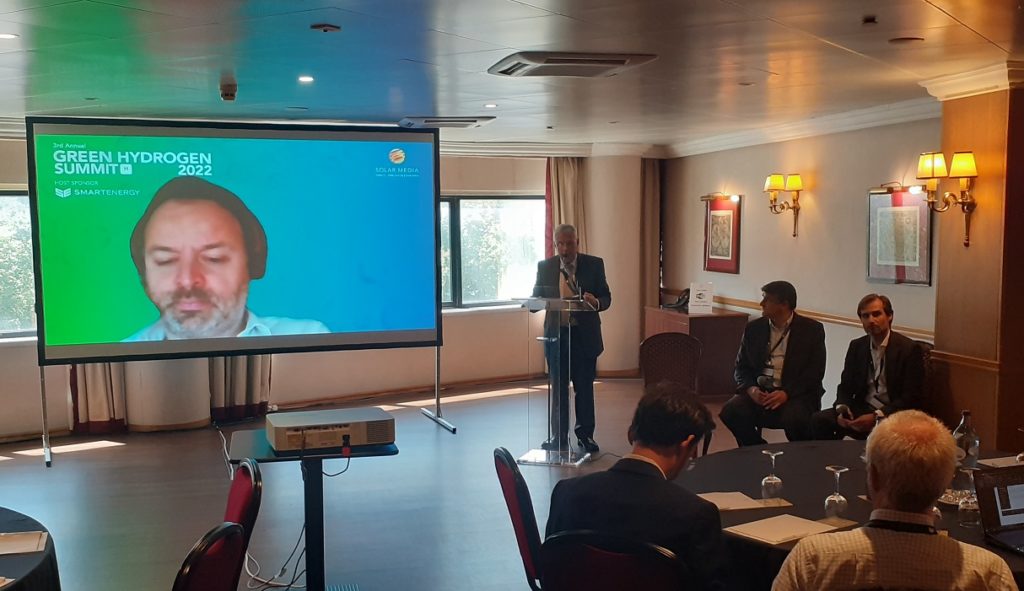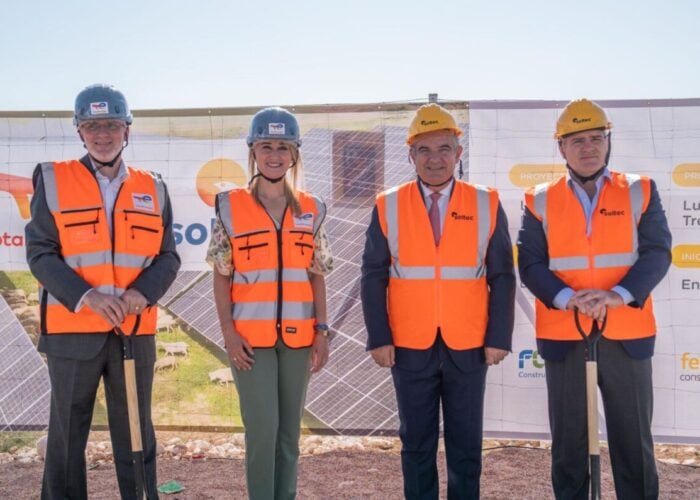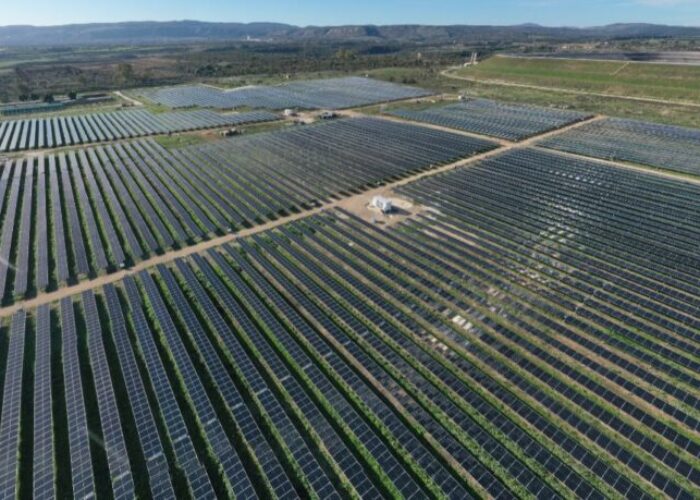
Powering electrolysers with renewables generation that would otherwise be curtailed could be an effective strategy for producing green hydrogen in the coming years until the H2 sector benefits from further cost declines, it was suggested during a panel discussion.
Speaking during the Green Hydrogen Summit 2022 yesterday, Pedro Almeida Fernandes, head of power generation at utility Endesa Portugal, said such an approach “brings a lot of competitiveness” to the price of producing green hydrogen.
Unlock unlimited access for 12 whole months of distinctive global analysis
Photovoltaics International is now included.
- Regular insight and analysis of the industry’s biggest developments
- In-depth interviews with the industry’s leading figures
- Unlimited digital access to the PV Tech Power journal catalogue
- Unlimited digital access to the Photovoltaics International journal catalogue
- Access to more than 1,000 technical papers
- Discounts on Solar Media’s portfolio of events, in-person and virtual
“Curtailment is already playing a role and will play a role over the next few years. And it will help to bridge the gap in price until that gap is bridged technologically by scale in industry,” Almeida Fernandes said during the event, hosted by PV Tech publisher Solar Media in Lisbon.
He explained that in markets such as Iberia, grid constraints mean developers are hybridising renewable sources to increase the load factor while making the most of grid connection points – an approach seen in Portugal’s recent solar auction, in which utility EDP secured a contract for a floating PV project it plans to hybridise with a ground-mount solar farm and a wind plant.
Endesa earlier this year was awarded connection rights to develop a €600 million (US$660 million) project in Portugal that will combine solar, wind, a battery energy storage system (BESS) and a 500kW electrolyser for the production of green hydrogen. The electrolyser will use surpluses that exceed the BESS’ storage capabilities.
Endesa will be able “to fully capture all the renewable energy produced”, avoiding curtailment while improving the profitability of the renewables projects in the process, Almeida Fernandes said.
“We can input this extra energy to the electrolyser at virtually the opportunity cost in order to be able to compete in H2 price.” Such a strategy “brings a lot of competitiveness” in price, since the company only has to recuperate the electrolyser investment, not the investment in renewables that produce the energy, Almeida Fernandes explained.
He said green hydrogen can be “extraordinarily useful” to decarbonise certain industry segments such as aviation and marine transportation. “I think we should design our projects… to target very specifically these key consumptions so that we can bring the economy towards green H2 faster and faster at a competitive rate.”
According to Pedro Pereira, managing director for Southern Europe at renewables developer Eurowind Energy, the move towards hydrogen “needs to be accelerated”, but should be supported by government incentives.
He said during the panel discussion that these could be in the form of tax rebates or feed-in tariffs or some support at the consumption level, adding that eventually it will be possible “to dramatically reduce the cost of green hydrogen to a fraction of what it is right now”.
Pereira is hopeful that cost parity will be reached with other forms of hydrogen production sooner than expected: “It’s also possible to reduce the gap to blue and grey hydrogen due to the carbon taxes that will tend to increase.”
According to Scott Crawford, systems engineer at the European Marine Energy Centre, the bigger the swing in electricity prices, the more chance hydrogen has of becoming competitive. “We’re seeing huge spikes at times in the spot market prices for electricity at the moment. And as those spikes get bigger, then hydrogen becomes more competitive,” he said.
Crawford sees stronger potential for electrolysers powered by behind-the-meter renewables plants. He said renewables asset owners will need to decide whether they should produce hydrogen or export electricity to the grid “because it will be more profitable to export it to the grid probably. But if you want the hydrogen, you might need to bite the bullet and take that risk.”







